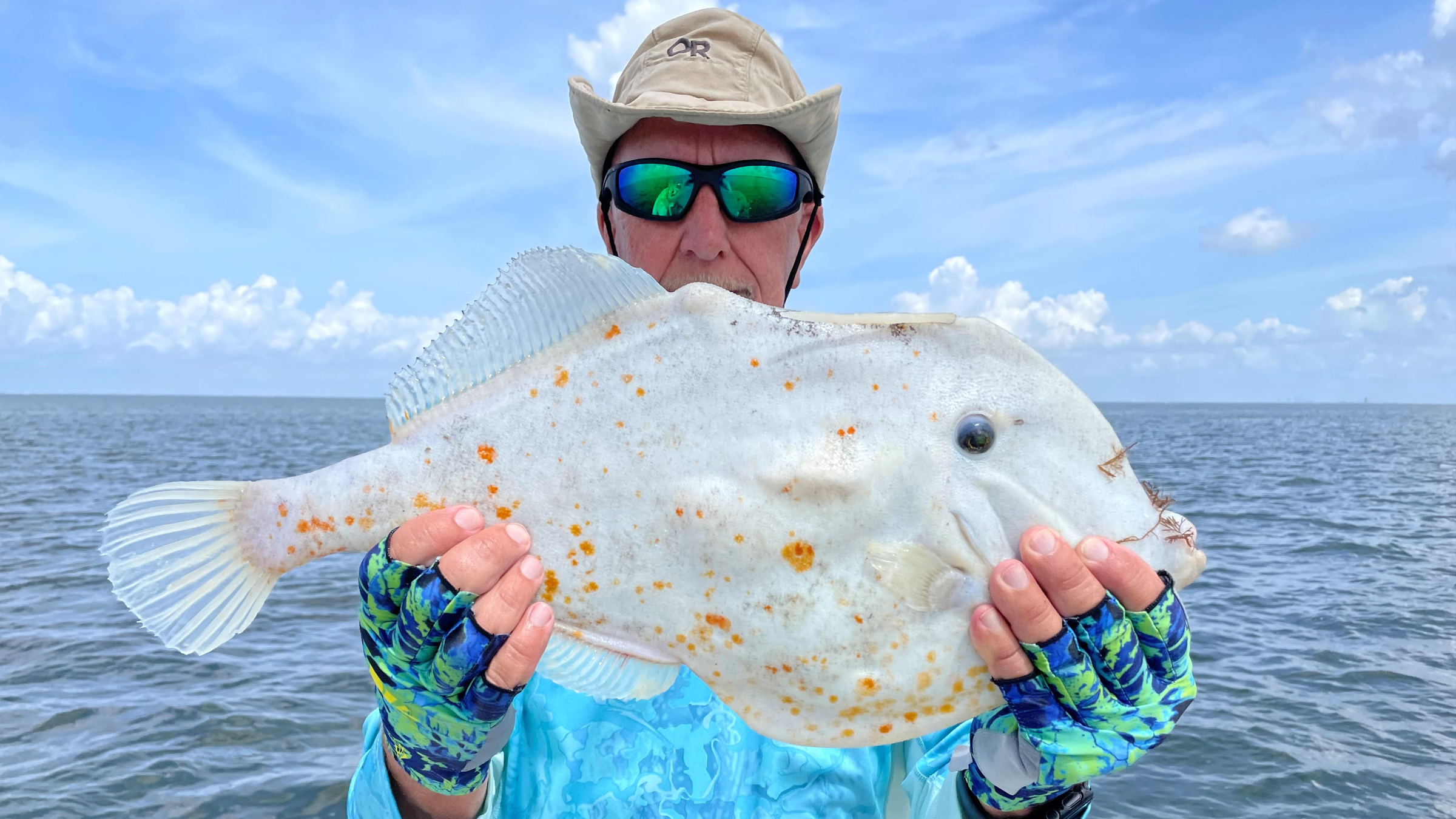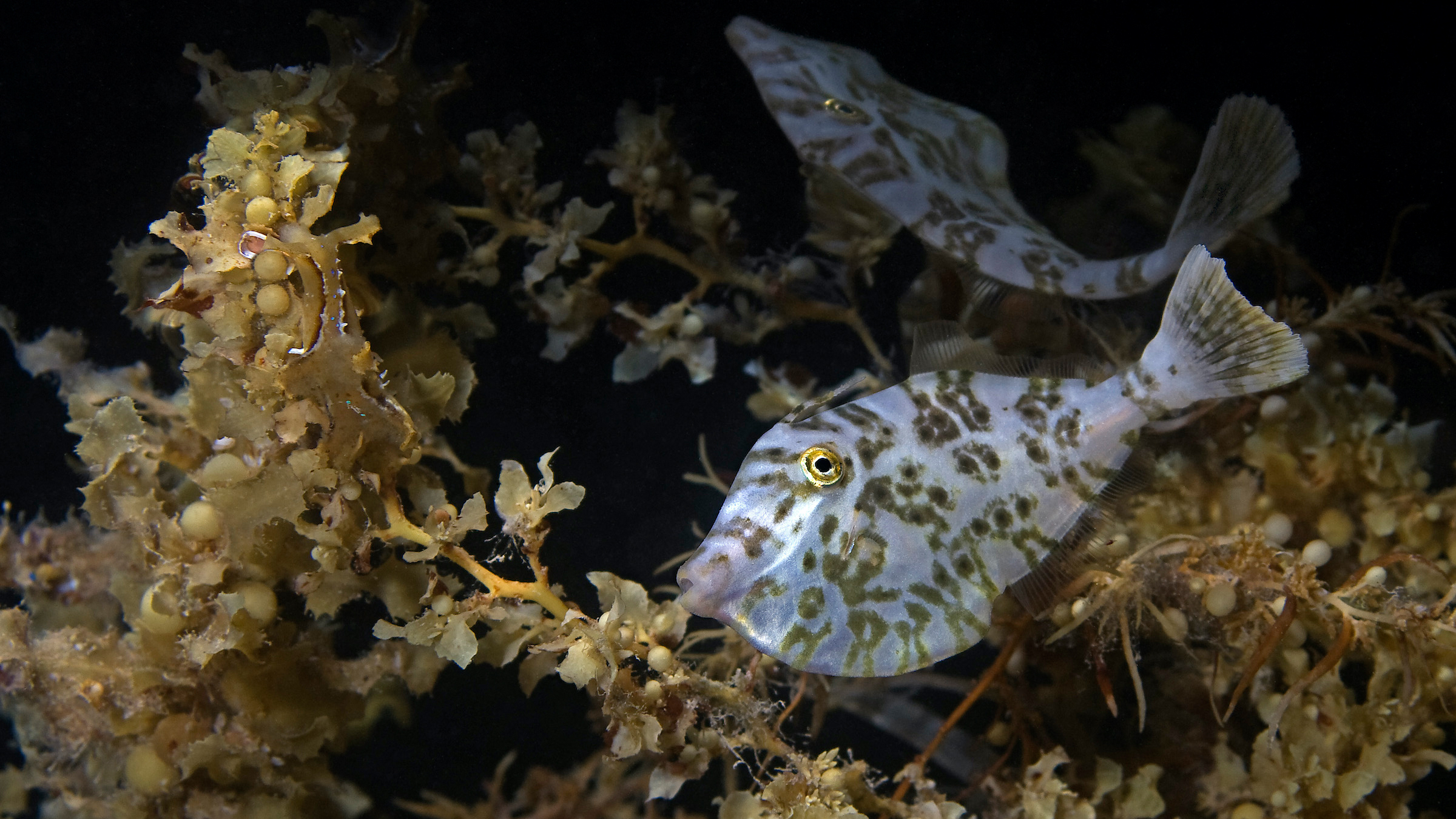'What the heck is that?' Florida angler catches 'tortilla fish.'
He quickly released the "tortilla fish" back into Tampa Bay.

When people go fishing, they expect to catch fish, not tortillas.
One Florida angler, however, caught a little bit of both: a fish that looks just like a flour tortilla (albeit, an oblong one).
"What the heck is that?" Tom Bosworth, an angler and retiree who lives near Tampa Bay, remembered thinking. "There's 200 species of fish out in Tampa Bay and that's one of the stranger ones I ever caught."
Related: In photos: 'Faceless' fish rediscovered after more than a century
Bosworth caught the fish on March 31, while fishing with two friends. However, the fish was identified publicly only recently — as an orange filefish (Aluterus schoepfii) — in an Aug. 27 Facebook post by the Florida Fish and Wildlife Conservation Commission (FFWCC).
Back in March, Bosworth had no idea what he had caught. He recalled picking up bait before the fishing trip and being disappointed that it was small. But that may be why he caught the fish — Bosworth switched to a smaller hook to accommodate the tiny shrimp bait, which may be why he caught the orange filefish, which has a very tiny mouth.
In fact, "we were about ready to call it quits for the day," when Bosworth decided to try to snag one more fish. When he felt a tug on the line, he looked down and thought the ghostly white fish was a plastic bag. "OK, I'll pull the trash out today," he recalled thinking.
Sign up for the Live Science daily newsletter now
Get the world’s most fascinating discoveries delivered straight to your inbox.
Once he reeled in the catch, he realized it was a white fish covered with orange speckles. "The three of us looked at it and went 'What is that?'" Bosworth told Live Science. They took a few photos and released the roughly 22-inch-long (55 centimeters) fish back into the bay, where it swam away.

Curious about the tortilla-like fish, Bosworth emailed his photos to the FFWCC, which identified the species. It's far from the first time a member of the public has asked about the orange filefish; every year, about three people send photos of these fish to the FFWCC, asking experts to identify them, Eric Post, an ichthyology collection manager at the FFWCC told Live Science.
While not as common as Tampa Bay's mangrove snapper or spotted seatrout, the orange filefish isn't an uncommon catch, Post said. In spite of its name, the orange filefish comes in a variety of colors and patterns, from olive-gray to orange to white colors and from light speckles to complex patterns, according to the Florida Museum. These fish typically live in seagrass beds, where they graze on algae and other vegetation. They can be found on both sides of the Atlantic.
The orange filefish even has a secret defensive tool. When it feels threatened, it dives into a nearby crevice or hole and raises its rigid dorsal spine — a thin, antenna-like protrusion at the top of its head. This spine keeps the fish wedged in its hidey-hole until the danger passes. If a predator, such as the inshore lizardfish (Synodus foetens) or sooty tern (Sterna fuscata), is trying to eat it, the orange filefish can use this erect spine to keep it out of the predator's mouth, Post said.
But while some predators may find orange filefish tasty, most humans do not. These fish have tough, leathery skin and don't have much meat on them, Post said. What's more, because orange filefish eat algae, they've been associated with human cases of ciguatera (sig-wah-TARE-ah), when a person becomes ill after eating reef-dwelling fish that contains algal toxins, according to the Florida Museum and the Centers for Disease Control and Prevention.
Instead, most people encounter the orange filefish in aquariums.
"It's certainly one of the most interesting fish I ever caught," Bosworth said.
Originally published on Live Science.

Laura is the archaeology and Life's Little Mysteries editor at Live Science. She also reports on general science, including paleontology. Her work has appeared in The New York Times, Scholastic, Popular Science and Spectrum, a site on autism research. She has won multiple awards from the Society of Professional Journalists and the Washington Newspaper Publishers Association for her reporting at a weekly newspaper near Seattle. Laura holds a bachelor's degree in English literature and psychology from Washington University in St. Louis and a master's degree in science writing from NYU.









